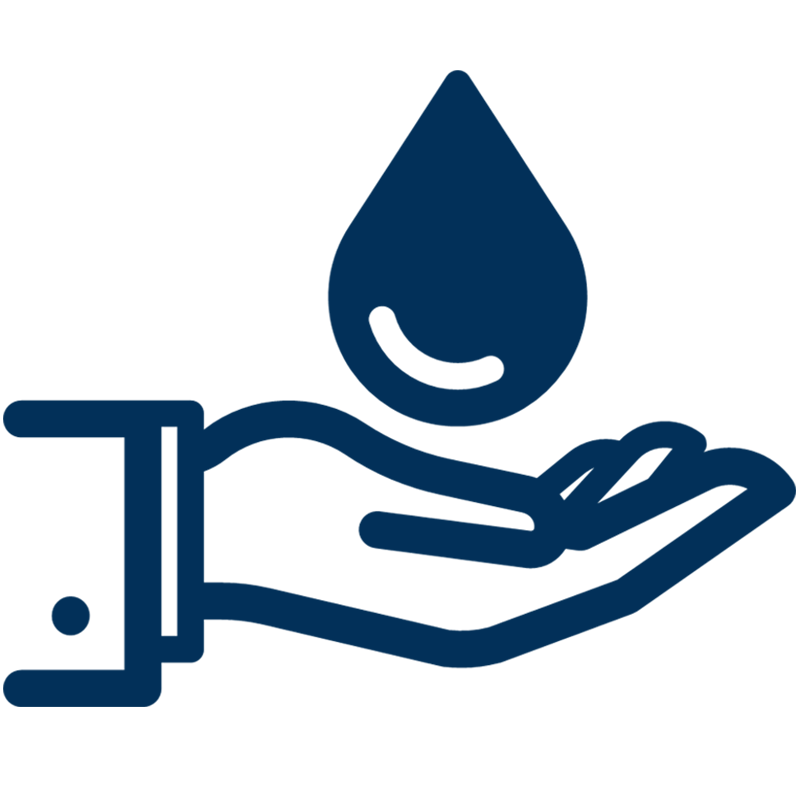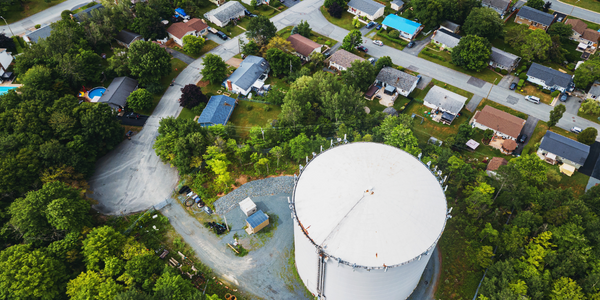
Intelligent Urban Water Supply Management
Intelligent Urban Water Supply Management uses IoT gateways to securely connect the water supply asset (e.g. pressurizing pumps) to the cloud service platform where advanced analytics are applied to the operational data communicated from the assets. The operational insight obtained from the analytics are used to drive the water supply domain applications to monitor and provide advanced maintenance capability, monitor water quality, detect water leakages, reduce energy consumption of pressurizing pumps and ensure equitable water distributions to the points of consumption during water peak usage hours and water supply shortages.
- Construction & Buildings
- Maintenance
Smart Water Metering Market size will exceed USD 3 Billion by 2024.
Source: Global Market Insights, Inc.
What business value do Intelligent Urban Water Supply systems?
- Increase the safety and quality of the water supply by employing system-wide water quality monitoring, supported by analytics, to raise water quality issues & identify sources of degradation.
- Improve the availability of the water supply by employing advanced asset maintenance capabilities with real-time monitoring, fault detection, and preventive maintenance to improve water supply asset reliability.
- Enhance efficiency of water supply operations by employing advanced analytics on water supply asset operational data to reduce asset energy consumption, detect water leakage and optimize system-wide water distribution during peak usage hours or under shortage in supply.
Municipalities and Water Utilities: Municipalities and water utilities prioritize intelligent water supply management to ensure reliable, safe, and sustainable water services for residents and businesses. They invest in smart infrastructure, data analytics tools, and asset management systems to optimize water distribution, reduce non-revenue water losses, and comply with regulatory requirements.
Regulators and Policy Makers: Regulators and policy makers support the adoption of intelligent water supply management practices to address water scarcity, climate change impacts, and aging infrastructure challenges. They promote regulatory frameworks, incentives, and funding opportunities to encourage investments in smart water technologies, resilience planning, and water conservation initiatives.
What technologies are used on Intelligent urban water?
EPANET (a water distribution system and pumping simulation tool) that allows complex rule-based decisions to be optimized. This enables extensive exploration of optimization of pumping especially in multiple tanks and multiple pump station systems.
What is SWG?
Smart water grids (SWGs) for use in water management platforms, which integrates information and communication technology (ICT) into a single water management scheme. SWG technology is seen as a promising solution for resolving recent critical global water problems. To ensure the security of water quantity, safety of water quality, and ICT-based water management solutions, SWG technology should integrate five prime research areas:
- Platform configuration in both water and ICT networks
- Guarantee water resources including both natural and manufactured water
- Intelligent control of water flow using bi-directional communication in water infrastructure
- Better management scheme dealing with risk-minimization for assets in the water infrastructure
- Energy efficiency in operating and maintaining water infrastructure.
What System/Network Monitoring Methods are available?
Automated Meter Reading (AMR): is a method of obtaining water meter readings through radio-transmitted signals. Using AMR technology, utility personnel can walk or drive by residences to collect water usage readings.
Advanced Metering Infrastructure (AMI): this technology was improved to help optimize water distribution networks including sewer and combined sewer system. AMI is a system that remotely and continuously collects and transmits information to various parties.
Supervisory Control And Data Acquisition (SCADA): this is a computer-controlled system that helps to monitor and control processes. SCADA systems acquire information from remote devices such as pumps, valves, transmitters, and others. SCADA systems consist of four levels of components/communication: field instrumentation, PLCs/RTUs, Comms/Telemetry, and SCADA Host.
What data can we get thanks to Intelligent urban water systems?
Intelligent urban water systems use state-of-the-art sensors and specialized software to continuously monitor and analyze the health of a system such as a water supply treatment system and network. This results in detailed information such as water consumption by hour, total volumes consumed, or minimum hourly flow per day, being relayed to water authorities.
How is data obtained by the system?
Smart Water Grid technology arises from data transmission, which utilizes radio frequency (RF).
Technology Integration: Deployment begins with integrating smart sensors, communication networks, and data analytics platforms into existing water infrastructure and management systems. Technology integration ensures interoperability, scalability, and security of smart water solutions, enabling seamless data exchange and collaboration between stakeholders.
Capacity Building and Training: Deployment involves capacity building initiatives to train water utility staff, operators, and decision-makers on the use of intelligent water supply management technologies and tools. Training programs enhance workforce skills, knowledge, and competencies in data analysis, system operation, and emergency response, enabling utilities to effectively manage smart water systems and optimize performance.
Case Studies.







